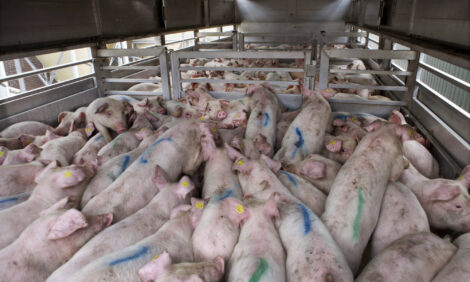



Cargill Reports Quadrupled Net Earnings
GLOBAL - Agri-food giant Cargill has reported a quadrupling of net earnings of $409 million in the second quarter ended 30 November 2012 as revenues rose six per cent to $35.2 billion. In the first six months, Cargill earnings totalled $1.38 billion compared with $336 million in the prior year.
Earnings rose in four of the company’s five business segments in the second quarter, and were up in all five through the first six months. The origination and processing segment was the largest contributor to Cargill’s second-quarter results.
“Cargill posted a solid second quarter, with earnings balanced and diversified across the breadth of the company,“ said Greg Page, Cargill chairman and chief executive officer.
“The steps we’ve taken over the past months to focus attention on what our customers value most, change how we work, instill more cost discipline and invest in growth are paying off in the current year. Most importantly, these changes are key to delivering sustainable growth year in and year out.“
Strong global trading and risk management results in more fundamentally driven markets and an improved margin environment in oilseed processing in several regions boosted earnings well above the year-ago level.
The agriculture services segment also recorded increased earnings, due in part to improved operating results in animal nutrition. Although the business faced rising feed ingredient costs, performance was enhanced by the integration of Provimi, which has brought more nutritional expertise, technology and products to the portfolio since the company was acquired by Cargill late in calendar 2011.
The North American farm services businesses benefited from large grain shipments in Canada, but the impact of drought-reduced crops in the Midwest held U.S. results below the year-ago level.
Earnings in the food ingredients and applications segment were down slightly from the year-ago quarter. The segment is made up of two groups of businesses: food ingredients and animal protein. Combined earnings in food ingredients were down moderately from last year’s strong performance.
The slippage was mostly related to excess capacity in the North American ethanol market and the return of profits in some product lines to more normalized levels. The animal protein businesses posted a combined profit compared with a loss last year when processing margins in the U.S. beef industry were sharply negative.
Most of the meat businesses benefited from improved volumes or margins in the current period, even though results were tempered by higher raw material or livestock feeding costs.
The risk management and financial segment turned around last year’s second-quarter loss, the latter a period when financial markets were stressed by debt turmoil in the U.S. and Europe. The segment’s asset management activities were well positioned to benefit from stronger financial markets and improved investor sentiment in the current period. The segment’s energy businesses were essentially flat with last year on a combined basis.
Earnings rose in Cargill’s industrial segment, although deicing salt production volume lagged typical levels due to the inventory carryover from last year’s mild North American winter.
Cargill continues to invest to better serve customers around the world. Following two fiscal years in which capital spending was tilted toward acquisitions, the company’s current capital investments are weighted toward new, expanded and modernized facilities that support the growth objectives of customers and the company.
“We have a record $2.4 billion of large projects under construction in 13 countries,“ said Mr Page.
“As these facilities come on line, they strengthen Cargill’s supply chain, risk management and innovation capabilities. We want our customers and stakeholders to think of Cargill first when they are looking for a solution or an opportunity. These investments help us better serve their needs and become the partner of choice.“







